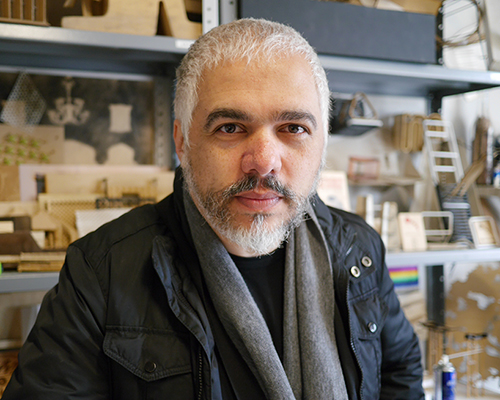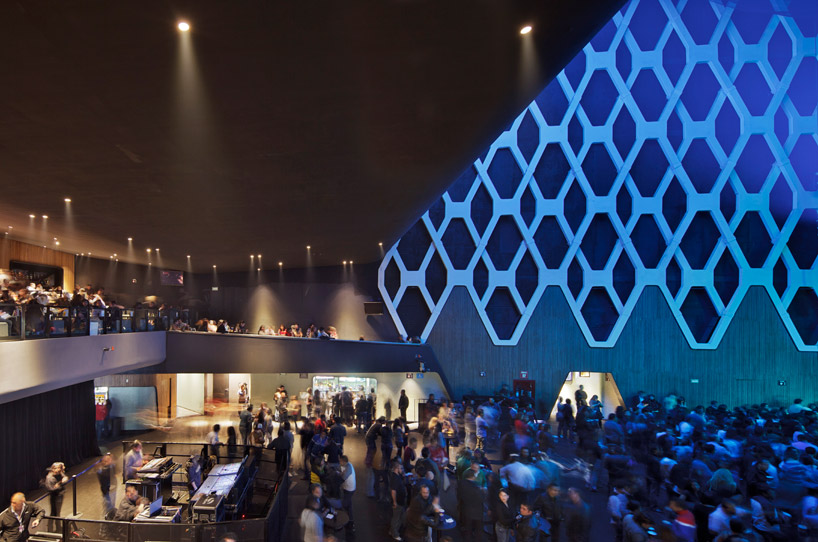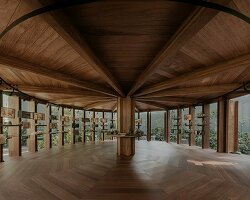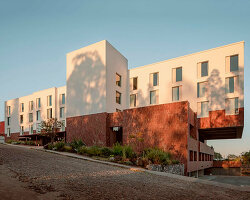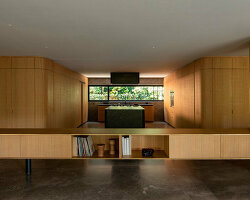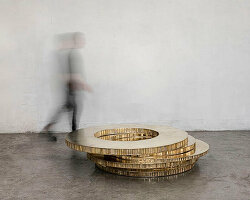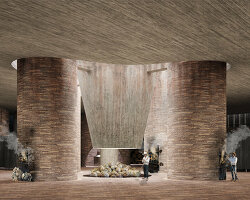héctor esrawe
portrait © designboom
héctor esrawe is a mexican designer whose work encompasses everything from interiors to residential and commercial spaces and the production of artisanal and industrially manufactured furniture. designboom caught up with him at his studio in mexico city to learn more about his work process and much more…
designboom: do you remember what made you want to become a designer?
héctor esrawe: as a child I would always dismantle objects (watches, mechanical objects, toys etc.) and try to put them back together – to see how they worked. I wanted to see the soul of these things and understand them inside-out. growing up I liked looking at buildings, objects, artworks – it was something intuitive. then, when I was about 17 years old I discovered that the common link between everything that I liked was design – and I’ve been hooked ever since.
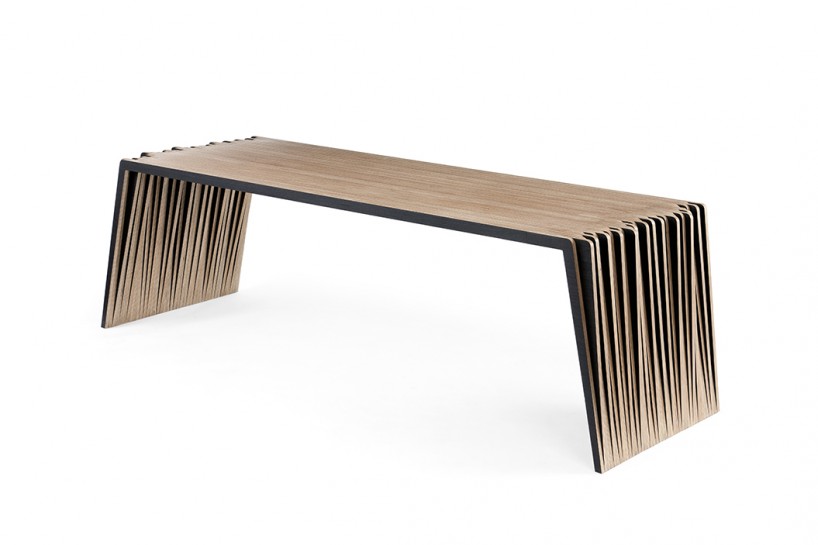
field table
DB: who or what has been the biggest influence on your approach to design?
HE: there have been a great many influences, too many to list. but my teacher oscar hagerman was a particularly big influence on me in the early years. he opened my eyes to the social, emotional and human benefits of design. when I was a student I started working with him and travelling to different parts of mexico, learning all the time.
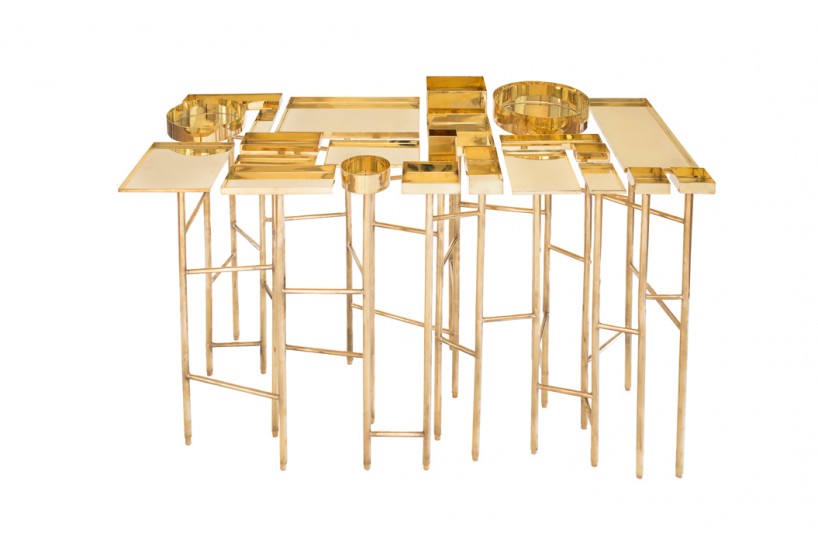
OCD table
DB: did you start your own studio immediately after graduating?
HE: no, I worked in a studio for about a year, but quickly realized that I wanted to choose the projects I would work on myself, I needed control over that. so I started my own studio, I was naive and made a lot of mistakes – I was just 22 but I already had the the core idea behind my studio, which was that I wanted to find a way to use mexican artisanal techniques in a new way, to open up some new discussions about design in mexico. on a trip to helsinki I noticed that art, design and craft were held in equal esteem in most galleries and that changed my way of thinking. in finland the designer, the artist and the artisan see themselves as equals and I understood then that that is what had to change in mexico. I’ve worked in that way ever since, working horizontally rather than hierarchically. I don’t impose the ‘design world’ on the artisan – rather I propose a collaboration based on mine and his skills. another important part of our approach is to never stereotype. I still have no idea of what ‘mexican design’ is.
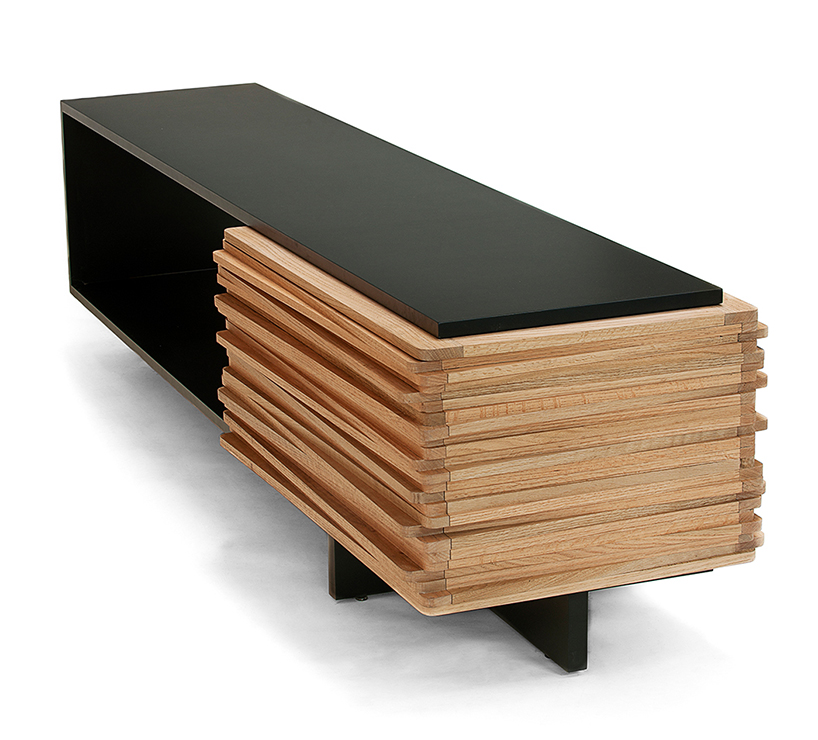
stack sideboard
DB: how has your studio evolved over the years?
HE: the studio is now 23 years old – so many, many things have changed! something that hasn’t changed is that I don’t wan’t to define who I am as a designer or what the studio does. I always try to keep every door open and not be categorized.
DB: how do you keep your ideas fresh?
HE: we continually collaborate with people that have different skills from us – people or studios that expand our knowledge and take our work into different areas, which is really nice – you can’t get bored this way.
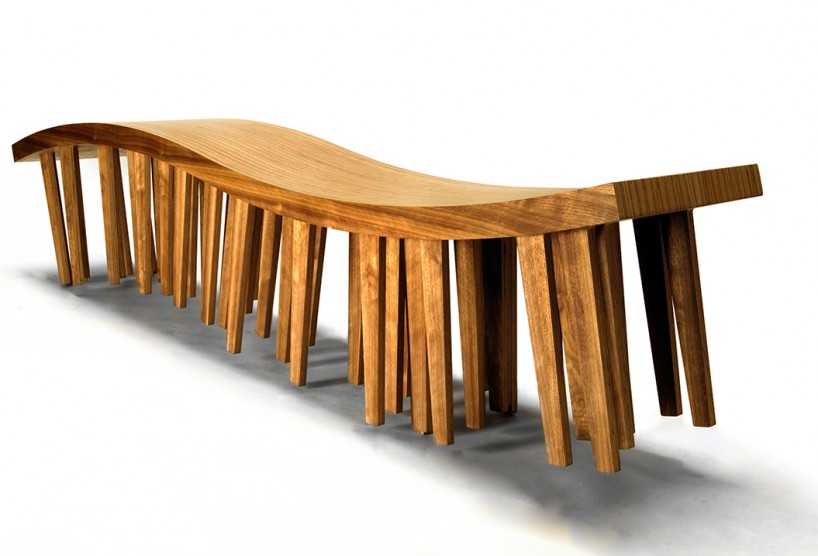
centipede bench
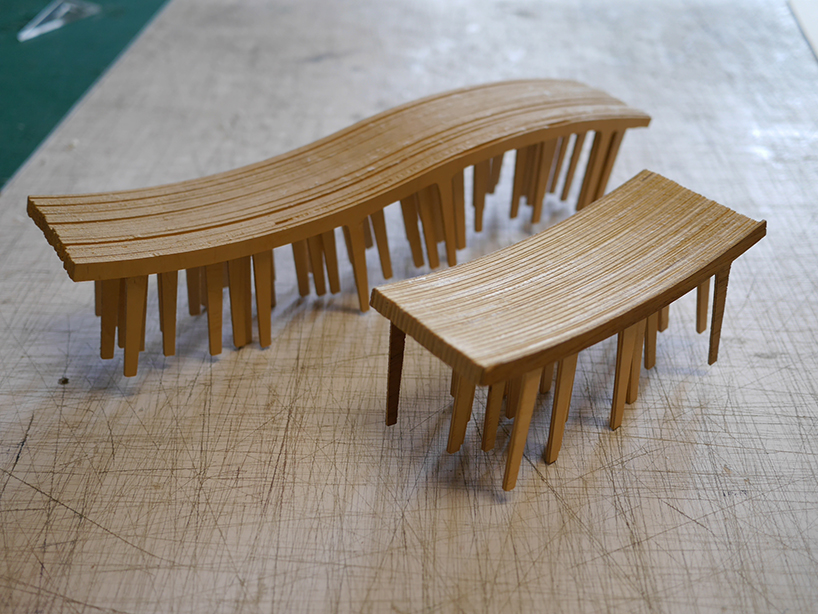
models of the centipede benches at esrawe studio
photo © designboom
DB: what do you think your strongest skill is?
HE: to be a good conductor – I’m able to orchestrate a project well. what I’ve learned to do is take a big complicated project and deconstruct it into smaller challenges, assign them to people I know will do an excellent job and then reconstruct all of the work back into one thing.
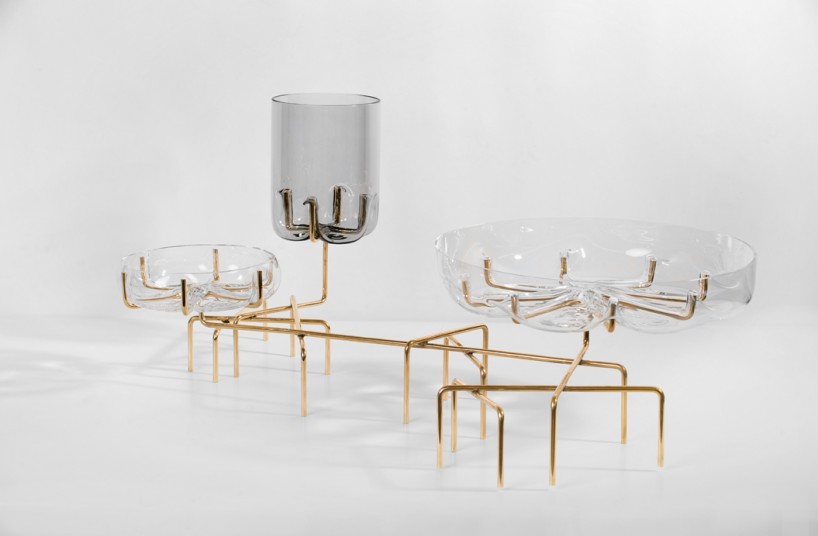
balanza
DB: how did you come to start your collaboration with ignacio cadena / cadena y asociados and what you enjoy most about the type of work you do together?
HE: nacho is a man of many talents, he’s an architect, a designer and very astute with regards to branding… he knows a lot about a lot of things. we met about 6 or 7 years ago when a few different clients invited us to work on their projects – we thought that since people were naturally pairing us up we should probably work together right from the start of a project. our first joint venture was cielito querido cafe which was a coffee chain that out to be very popular in mexico. we’ve since done many projects together, probably about 70% of our work is together but we each do things with other collaborators.
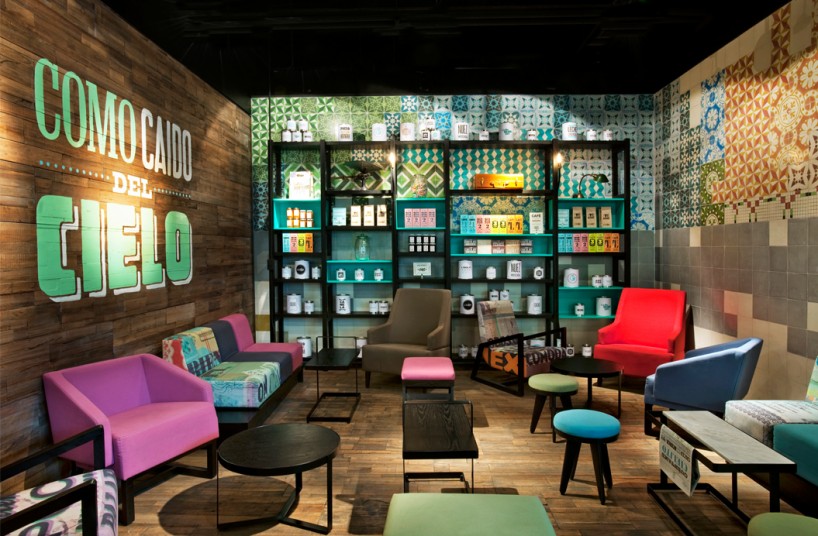
cielito querido cafe by esrawe studio and cadena y asociados
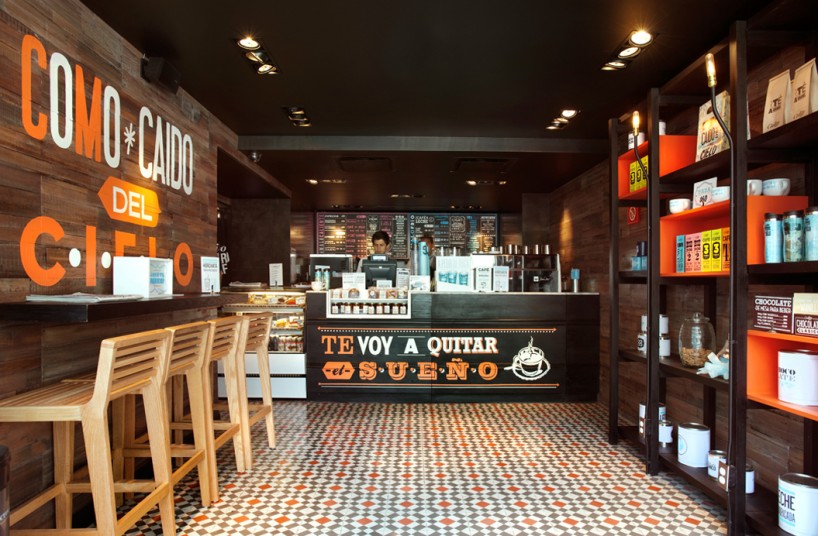
cielito querido cafe
DB: what things have you learned from that particular collaboration?
HE: how we work together has evolved over the last six years. at a certain point we realized that when we are creating a new brand or experience these things can’t be just what we wan’t but what they need to be in order to serve their purpose and be successful. in that respect we can’t always do what the client wants either – but rather, what they need. this can be very tricky news to break to a client but we have gradually learned how to handle this. the process is what is most important. if we follow a good process then lots of good solutions will come from it. it is not a race to find one ‘perfect’ solution.
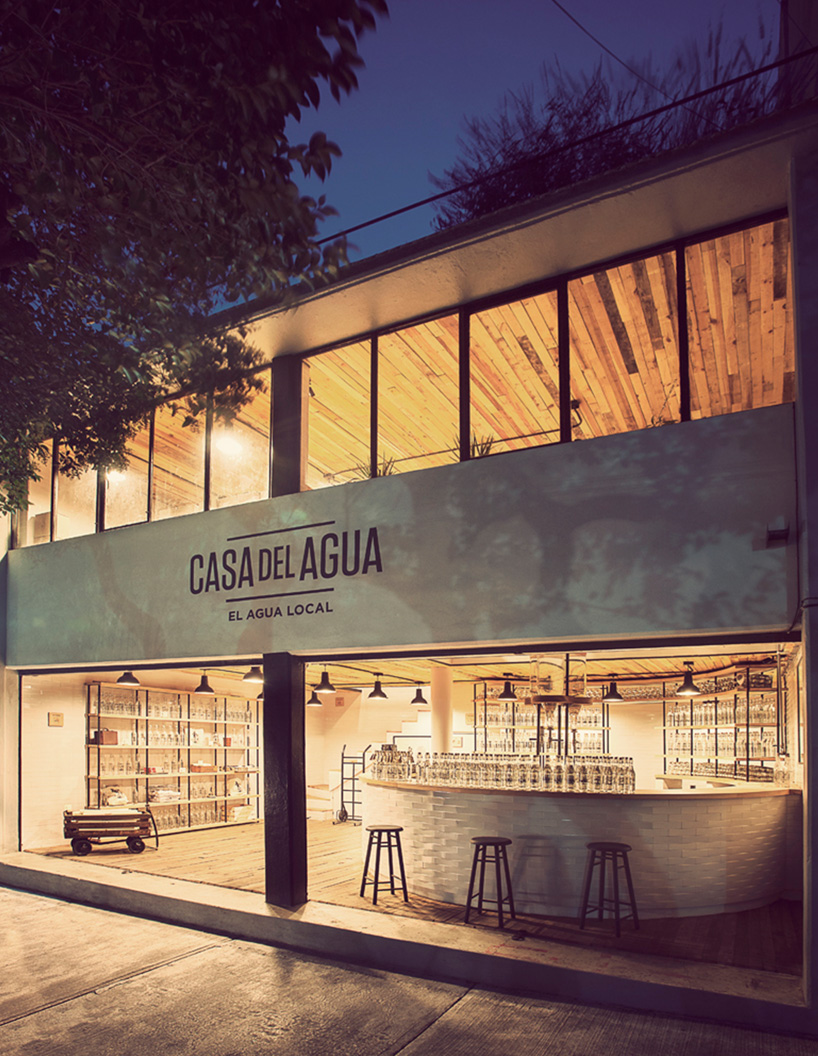
casa del agua by esrawe studio and cadena y asociados
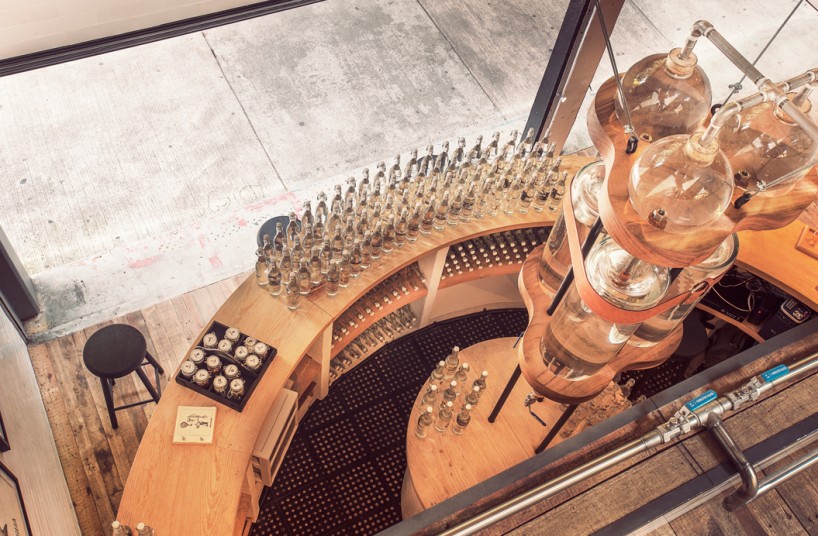
casa del agua by esrawe studio and cadena y asociados
DB: please could you tell us more about your process?
HE: we never start a project by sketching, we digest what the client has told us and then start with very intense research. using the research we map out the co-ordinates of a route to the solution that we need to arrive at. using these co-ordinates we can begin working on ideas and design. many people don’t do that – they simply swallow what the client asks for and respond quickly with a gut feeling, an obvious solution – without understanding the bigger picture.
when we present our ideas to the client it’s thorough a presentation, 100s of slides long, that takes the client through our process and ending with one holistic solution to all their needs. this way opinions and questions of taste are not up for discussion – we’re proposing something that is what it needs to be. we show them what it’s going to be and how its going to – look right down to the smallest details – everything – the soul of their brand.
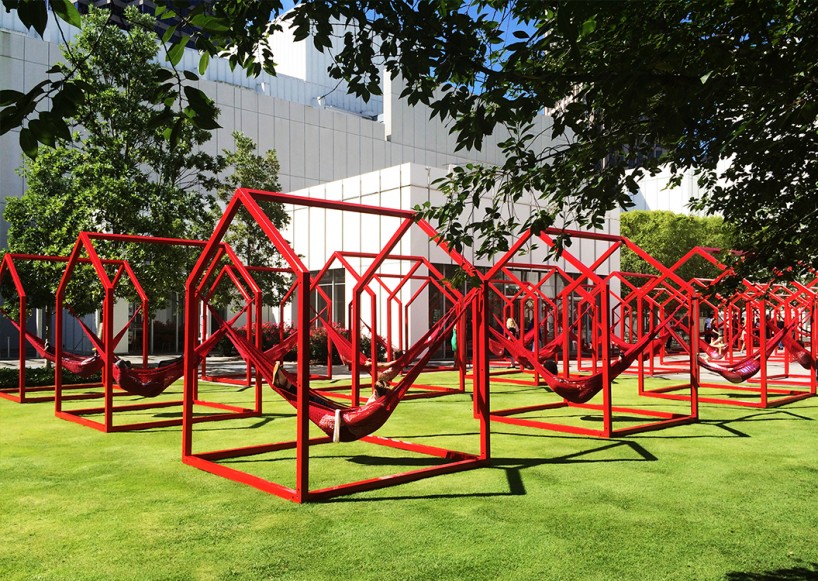
mi casa, your casa by hector esrawe and ignacio cadena
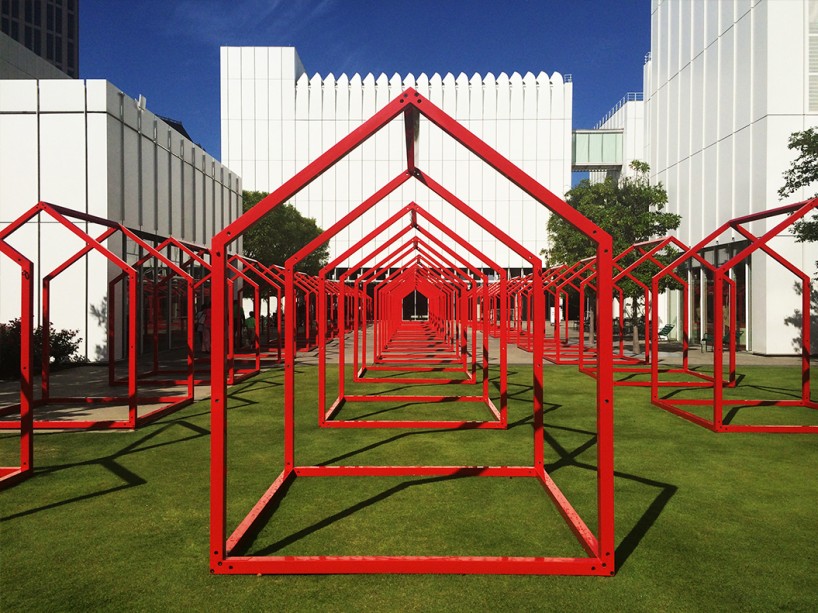
see designboom’s article on this project
DB: what part of a project do you enjoy the most?
HE: I like the technical parts of a project very much. figuring out how something will be realized. but more than a part of a project I like all the different places that design can take you. if you are designing a shoe shop then you learn all about that world. next might be an art installation – so you learn about something else. I love how all the different projects start to connect and overlap in your mind. being a designer is a really great way to experience and learn about the world – your mind stays very fit as a designer.
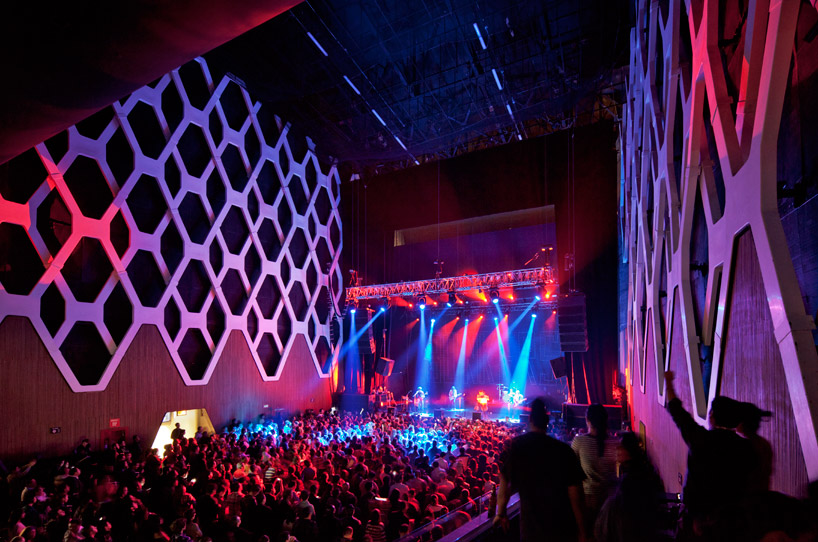
el plaza condesa by antonio muñohierro + esrawe studio
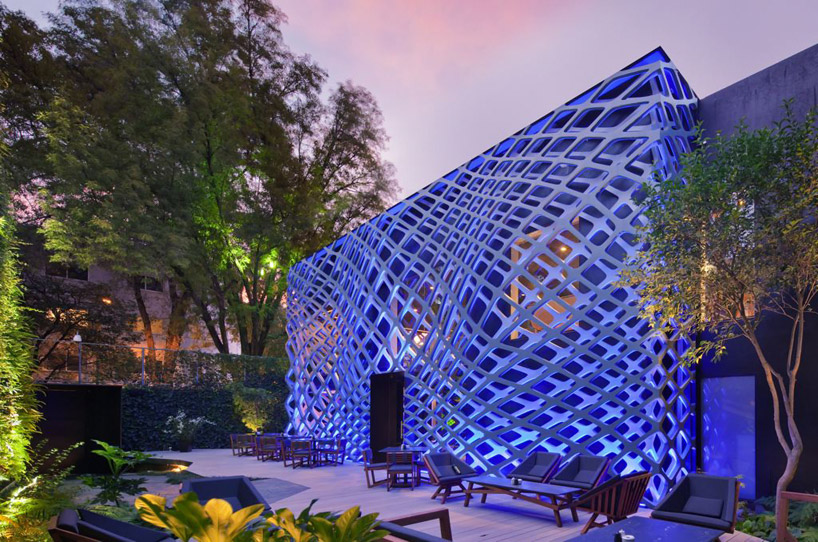
tori-tori polanco by rojkind arquitectos in collaboration with esrawe studio
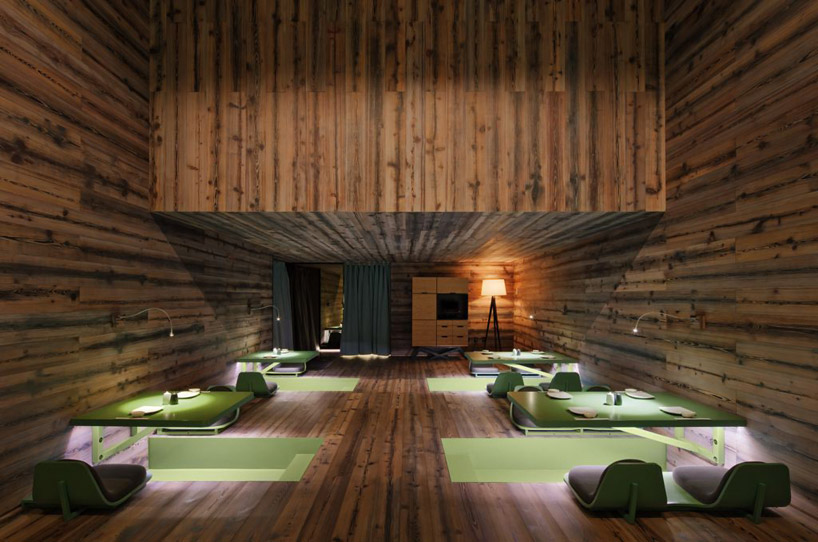
see designboom’s article on this project
DB: how have attitudes towards design changed in mexico over the 23 years you have had your studio?
HE: there was no design scene in mexico 20 years ago. when we started out we were completely isolated from everything. we had no computers, there was no internet no design magazines – we might see them a year after they’d been released or when we traveled – that was it. we were more influenced by what we saw in mass media and pop culture: MTV, hollywood films, music magazines.
as a culture we also didn’t have the demand for high quality either. ’good enough’ was a sort of mexican mentality back in those days when talking about furniture and objects. of course designers wanted to change that and slowly we have but it’s taken time. we always knew that the skills and materials existed here to make better quality products it just took a while for everything to gel together.
now there is a design scene in mexico and it’s thriving. there’s work being done here that’s as good as you’ll find anywhere in the world. now we can be critical, now we can question design.
DB: has the internet played a big part in the emergence of this ‘scene’ then?
HE: the internet and technology has transformed mexican culture in so many ways and is continuing to do so. for a long time in mexico there was this idea of becoming a designer because the word ‘design’ was associated with money, and showmanship, with media attention – ‘designer clothes’, ‘designer furniture’.
thankfully that stage seems to have passed. now kids get into design for the right reason – they can access information much more easily and inform themselves. gradually there’s become a better understanding of design and the positive effects it can have on society. there’s also more confidence showing through in the work being produced today.
DB: what’s the next step for the mexican design scene? what would you like to see happen?
HE: now we need platforms that provide critique and highlight innovation… associations that move things forward in conscious and interesting ways. as designers we need to remember our heritage, our culture and our values. even if it’s taken many years we still just on the epidermis of a design scene – we need go deeper. we must keep working hard and keep questioning ourselves and what we’re doing.
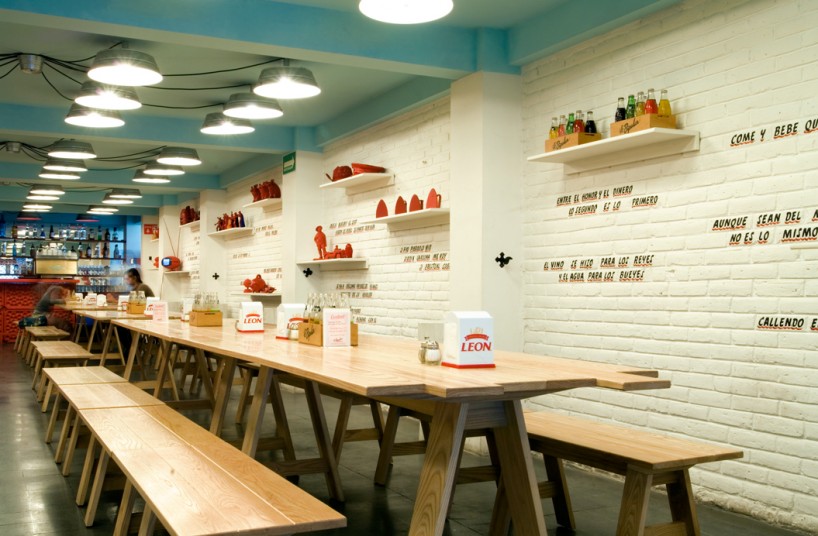
la bipo restaurant / bar by héctor esarwe and jorge mdahuar
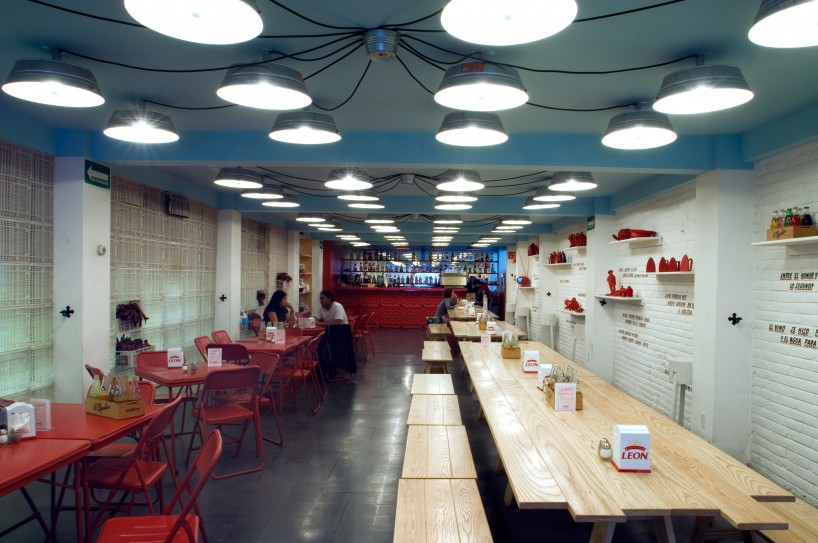
la bipo restaurant / bar by héctor esarwe and jorge mdahuar
DB: what advice do you have for young designers?
HE: generally I try not to give or listen to advice. because it’s completely circumstantial… completely contextual: the person giving advice is always different from the one receiving it.
when people put me on the spot though I always say: be passionate and be yourself. understand yourself and the things you like and you’ll not only be happy with the work you make but it will almost certainly be more original than if you try to be someone / something that you are not. we need to hear new voices, new perspectives.
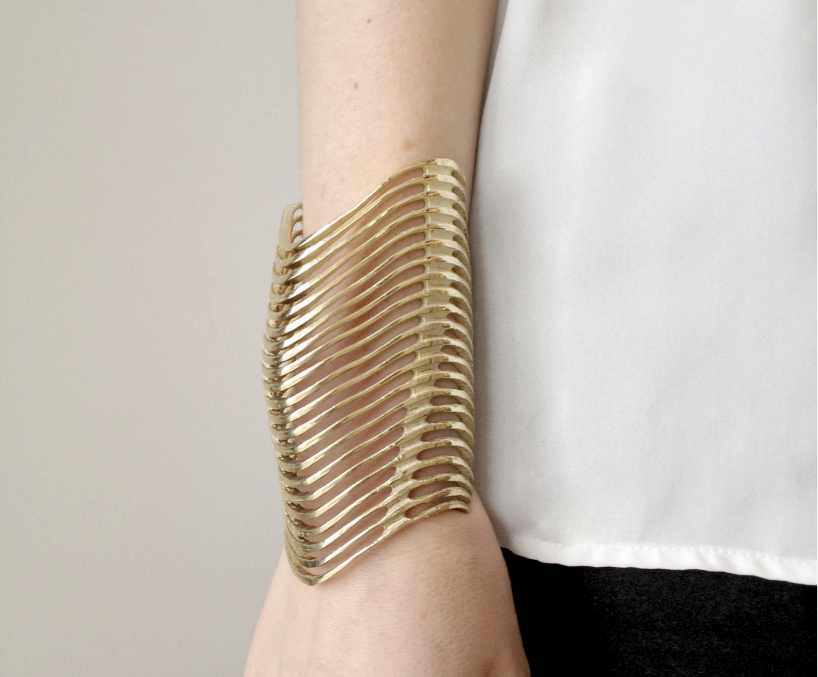
vestigio – 3D printed bracelet
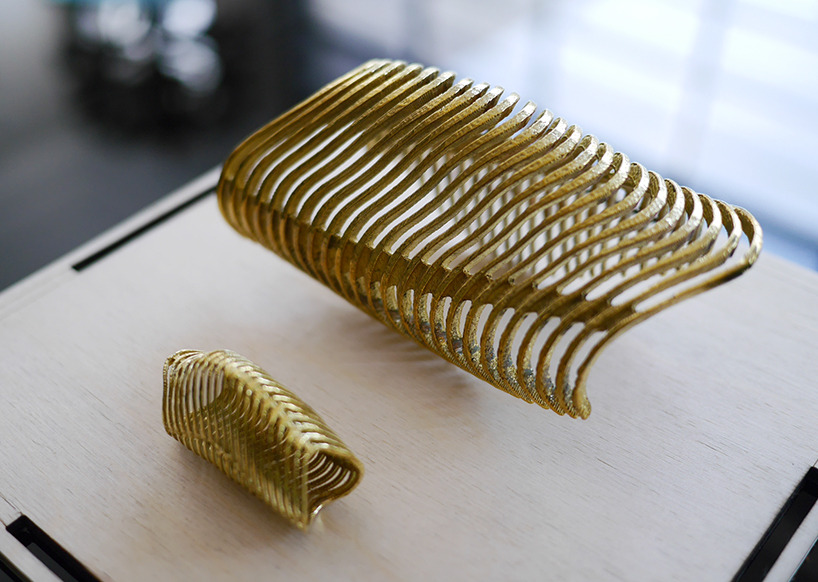
vestigio bracelet – the bracelet references a bone structure and the idea that advancing technologies could result in vestigial structures in the human body one day. the design also references esrawe’s thought that today’s 3D printed objects will one day be nothing more than vestiges of an outdated technology themselves.
DB: are you superstitious in any way – do any irrational thoughts influence your work?
HE: I’m not really superstitious – but I do have OCD. this way of thinking means that you want to give order to everything and resolve everything – you have this idea of harmony and perfection, which is the difficult part to live with. being obsessive compulsive means that you learn to live with debts – because nobody can solve everything. now I understand that I’m much more realistic about what I can and cannot do. what I want to do and what I don’t. that has put my mind at rest a great deal!
DB: do you have any self imposed rules you live or work by?
HE: I think honesty is very important. we never lie to a client or to each other in the office. if there’s a problem somewhere let’s fix it not hide from it. be realistic with clients, be fair – pay your team as well as you can, pay for the tools that you use, do things on time… keep things transparent, coherent and correct.
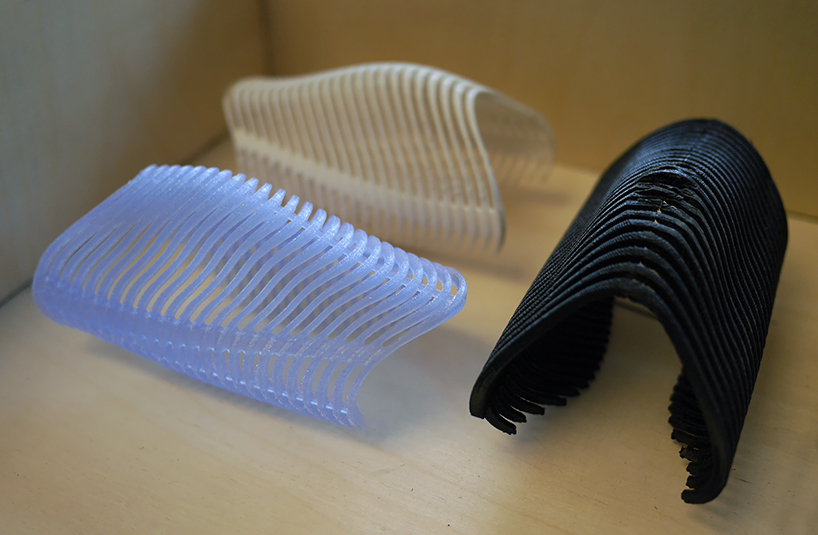
3D model studies for the vestigio bracelet
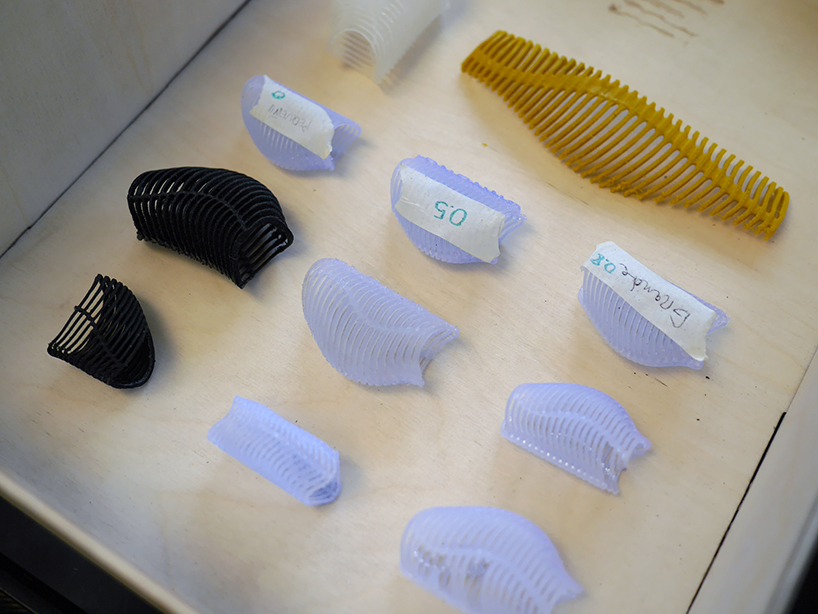
3D model studies for the vestigio bracelet
DB: what are you currently fascinated by and how is it influencing your work?
HE: 3D printing. I’m obsessed with it! I’m excited by the idea of fusing high-technology with low-technology, craft techniques and digital techniques.
DB: do you have a motto?
HE: ‘what I do defines who I am’
– something that pierre soulages said and I completely agree with.
ESRAWE STUDIO (37)
PRODUCT LIBRARY
a diverse digital database that acts as a valuable guide in gaining insight and information about a product directly from the manufacturer, and serves as a rich reference point in developing a project or scheme.
